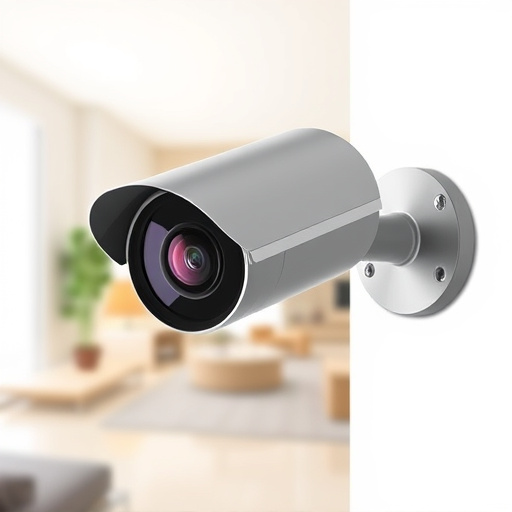Home surveillance cameras with audio capabilities have evolved into powerful tools for enhancing security and peace of mind. Offering high-definition video, night vision, motion detection, and cloud storage, these devices enable remote monitoring via live feeds or recordings. Key features to consider include resolution, night vision, storage options, and microphone quality. Installation involves strategically placing the camera, securing it, connecting to power, and configuring settings through a companion app. However, legal and ethical considerations regarding audio capture are crucial for responsible use while respecting privacy rights.
“Uncover the transformative power of home surveillance with our comprehensive guide on spy cameras. From understanding the technology behind these devices to navigating their legal implications, this article offers an in-depth look at modern spy cameras with audio capabilities.
We’ll explore key features, provide a step-by-step installation guide, and delve into privacy considerations, ensuring you’re equipped to make an informed decision for enhanced home security.”
Understanding Home Surveillance Cameras: A Comprehensive Overview
Home surveillance cameras, also known as spy cameras for home with audio, have evolved into essential tools for enhancing home security and peace of mind. These devices capture video footage and often include audio capabilities, allowing users to monitor their properties remotely via live feeds or recorded clips. Understanding how they work, the different types available, and their features is crucial when selecting the right system for your needs.
Modern spy cameras for home with audio leverage advanced technology such as high-definition (HD) resolution, night vision, motion detection, and cloud storage options. They can be installed discreetly in various locations around the house, from indoor spaces like living rooms to outdoor areas like front porches and backyards. With real-time alerts on smartphones or tablets, homeowners can promptly respond to any unusual activities captured by their surveillance cameras.
The Evolution of Spy Cameras for Home with Audio Capabilities
The evolution of spy cameras for home with audio capabilities has been nothing short of remarkable. What started as simple, fixed-location devices designed for basic surveillance, has transformed into sophisticated, multi-functional tools offering both visual and auditory monitoring. Today’s advanced spy cameras are equipped with high-resolution sensors, night vision technology, and built-in microphones that capture clear, detailed audio alongside vivid video footage.
This enhancement in capabilities is driven by advancements in technology and changing consumer needs. Modern smart homes demand comprehensive security solutions that provide real-time insights and alerts. Spy cameras with audio capabilities enable homeowners to listen in on conversations, detect unusual noises, and monitor activities within their properties, enhancing overall safety and peace of mind. These versatile devices have become indispensable for families, businesses, and individuals seeking to protect their assets and loved ones from potential threats.
Key Features to Consider When Choosing a Spy Camera for Home
When selecting a spy camera for home with audio capabilities, several key features should guide your choice. First and foremost, consider the camera’s resolution; higher resolutions like 1080p or 4K offer clearer images and video footage, enhancing detail visibility. Additionally, look for cameras with night vision capabilities, enabled by infrared LED lights, to ensure continuous surveillance even in low-light conditions.
Storage options are another critical aspect. Cloud storage provides remote access but may have subscription fees, while local storage via microSD cards offers offline recording. Audio quality is a significant feature, especially when monitoring activities through audio; select cameras with clear and robust microphone systems for optimal sound capture. Lastly, ease of installation and app compatibility should be considered for seamless integration and control.
Installation and Set-up: A Step-by-step Guide
Setting up a home surveillance camera, especially one with audio capabilities like a spy camera, is a straightforward process when broken down into manageable steps. Begin by selecting an ideal location for your camera. This could be near your main entrance, windows, or any areas requiring close monitoring. Ensure the spot offers adequate lighting to capture clear footage during all hours. Once chosen, mount the camera securely, ensuring it’s level and aligned correctly.
Next, connect the camera to a power source using the provided cable. Plug it into a nearby outlet for uninterrupted operation. For wireless spy cameras, ensure you follow the manufacturer’s instructions to pair the device with your home network. Configure the camera’s settings on your smartphone or computer using the accompanying app. Adjust privacy settings, motion detection parameters, and audio levels according to your preferences. Test the audio functionality by speaking into the microphone to confirm clear sound transmission.
Legal and Privacy Aspects of Using Spy Cameras for Home Surveillance
The use of spy cameras, or hidden surveillance devices, in homes has raised significant legal and privacy concerns. While these cameras can offer enhanced security for homeowners, their installation and operation are subject to various regulations and ethical considerations. In many jurisdictions, there are strict rules regarding consent, reasonable expectations of privacy, and the type of data that can be collected and stored by such devices. For instance, capturing audio without explicit permission is often illegal in several countries, highlighting the need for users to understand local laws before installing a spy camera for home with audio capabilities.
Privacy advocates argue that the constant monitoring facilitated by these cameras can infringe on individual privacy rights, especially if not properly secured or when access to the recorded footage falls into the wrong hands. It’s crucial for homeowners considering such surveillance systems to ensure they are using them responsibly and in compliance with data protection laws. This includes clearly communicating with residents or employees who may be within the camera’s range, ensuring secure storage of recordings, and regularly reviewing and updating privacy policies related to home surveillance technology, particularly when it involves audio capture.
